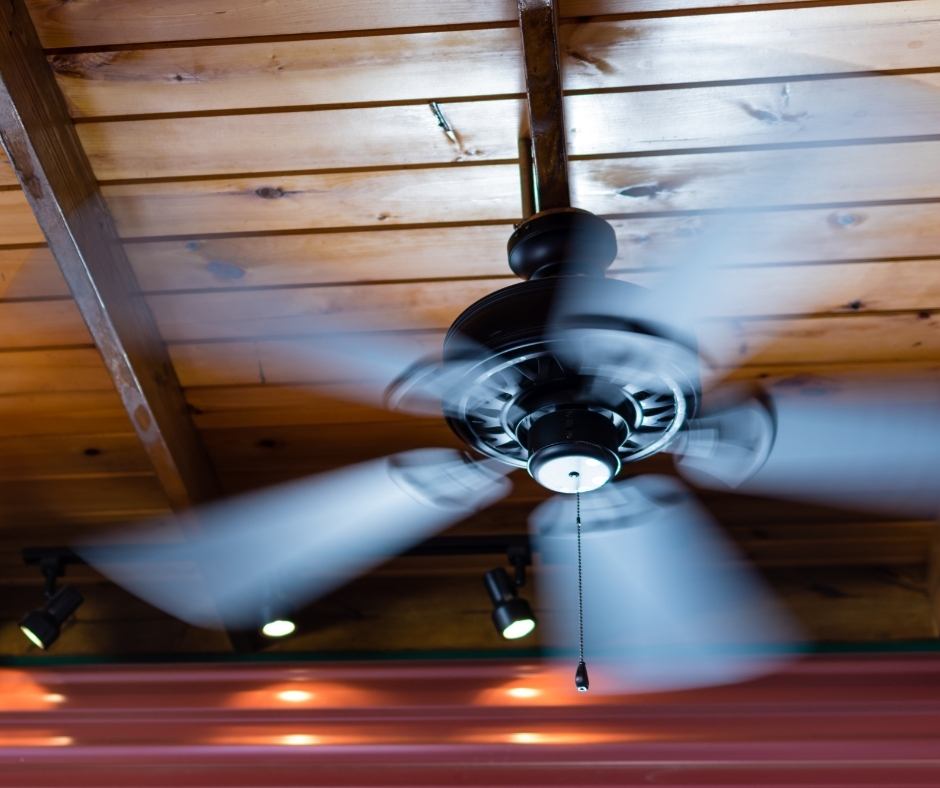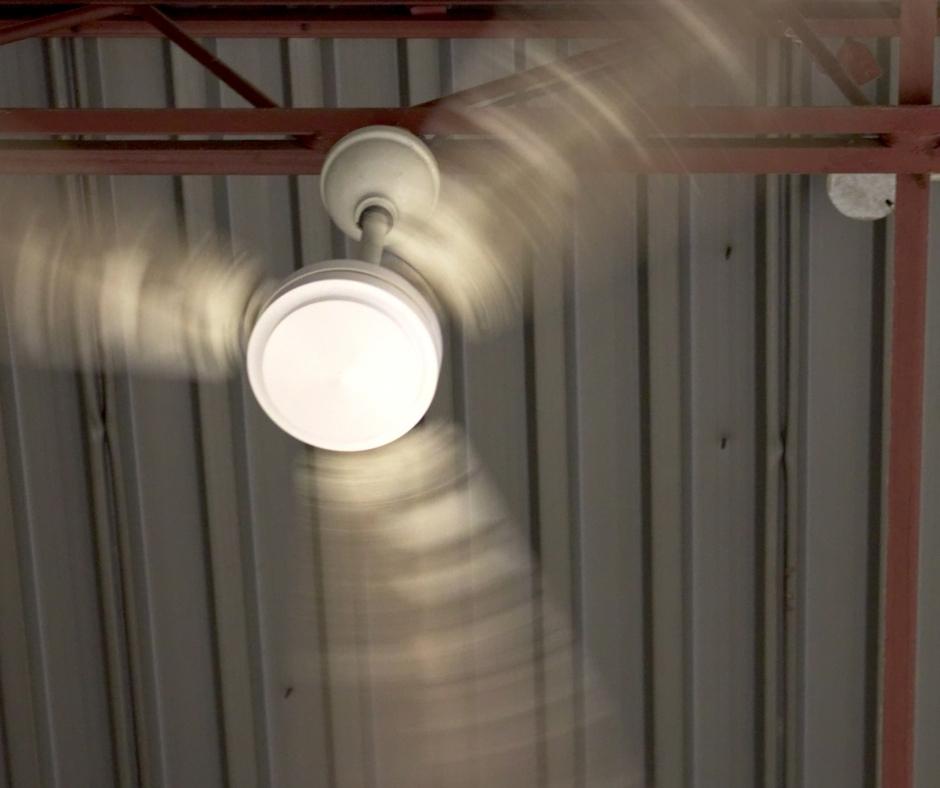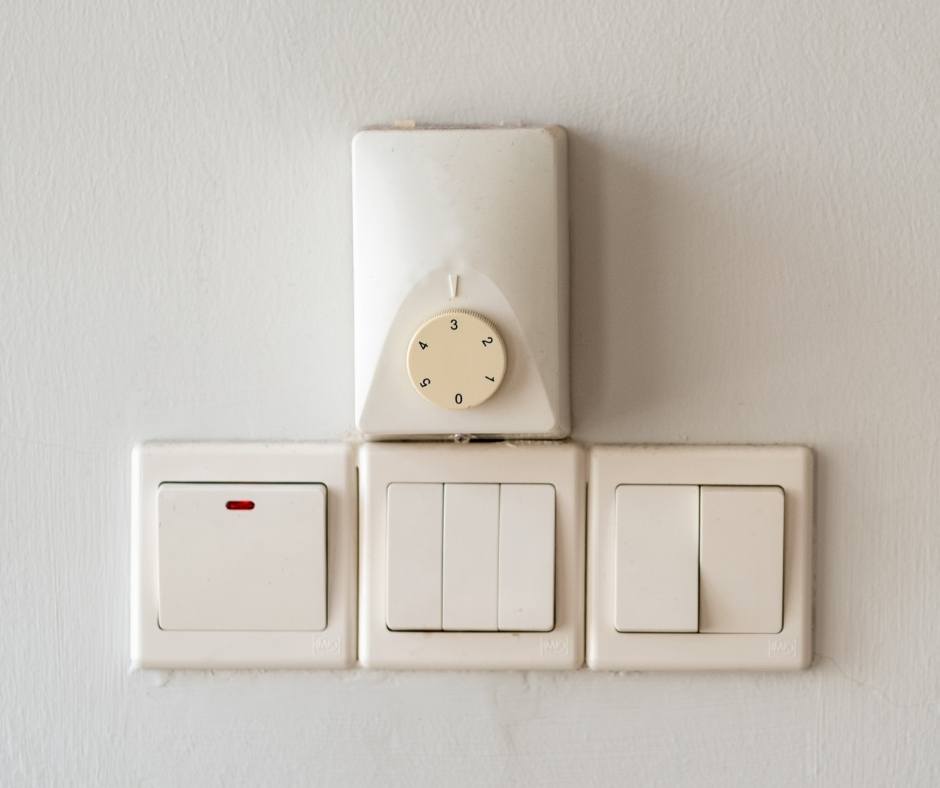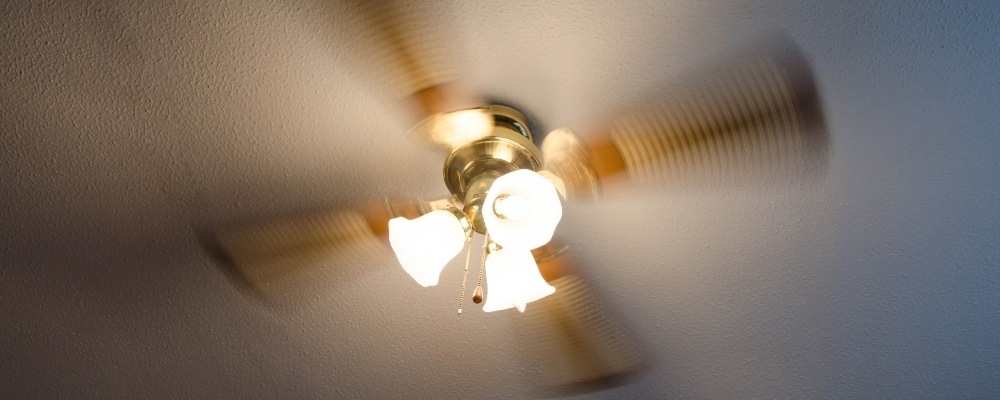Most ceiling fans operate at three different speeds so that you can adjust the air flow in your home. Most of the time, medium speed is perfect, but there are times when you need a little less or a little more air.
Figuring out why your ceiling fan won’t change speeds might seem like an intimidating problem. But, it isn’t. In fact, it’s almost always the same issue that’s causing your ceiling fan to not change speeds.
We’ll tell you what that issue is in this article. We’ll also go through the other four major reasons. So, by the end of it, you’ll have a better idea of what might be wrong and how to fix it. That could spare you a pricey service call.
In This Article We'll Discuss
5 Reasons Your Ceiling Fan Won’t Change Speeds

There’s one primary reason why ceiling fans won’t change speeds. When we say primary, we mean it accounts for approximately 95 percent of instances where fans won’t change speeds.
Capacitors govern the amount of electricity that is sent into the fan’s motor. They store electricity and release it to meet demand depending on what speed you want. If your fan won’t change speeds, it’s probably because the capacitor is blown.
The good news is that they aren’t hard to replace. Just take the fan apart to get to the motor housing, and look for a swollen or discolored capacitor. They’re easy to spot.
They’re either attached to the motor assembly with screws, or they screw in themselves.
Loose wires: When your fan blades spin, it’s inevitable that they will wobble a little bit. While that wobble is normal, it can pull at the wires that connect the internal components. When you check the capacitors, double check all your wire connectors.
Reconnect any wires that have been pulled away from connections, and tighten any connections that are loose.
Pull-chain problems: There are two ways to tell your fan to change speeds. One of them is a pull chain. And, pulling on that chain will lead to wear and tear over time.
If your pull chain is no longer changing your fan’s speeds, it’s possible that the chain itself is broken inside the fan. Check the chain from the handle to where it connects to the fan’s control mechanisms, and replace it if necessary.
Remote control unit: The other way to tell your fan to change speeds is with a remote control. If you use a remote for your ceiling fan, we recommend checking its batteries before checking anything else.
While the majority of cases in which ceiling fans won’t change speeds involve a blown capacitor, having dead batteries in your remote is also a possibility. And, it’s the easiest problem to fix.
Issues with the bearings: A necessary part of a smooth operating ceiling fan is its bearings. Those bearings require regular lubrication or else friction might set in and make your fan work a lot harder to spin.
We recommend putting a few drops of oil in the hole on top of the motor unit. There’s a hole specifically for oil. Alternatively, you can also do a full oil change.
How do I Fix the Speed Control on my Ceiling Fan?

The first step to fixing the speed control on your ceiling fan is determining what is causing the speed-related issues. Each reason has its own specific fix.
The vast majority of the time, speed-related issues in ceiling fans are caused by a blown capacitor. These electrical components control the amount of electricity that is sent to your fan motor and they will eventually fail.
Open your fan’s motor unit and look for discolored or swollen capacitors; they shouldn’t be difficult to find. Then, get a replacement capacitor number either from your owner’s manual or by calling the manufacturer. Remove the bad capacitor and insert the good one.
That will fix approximately 95 percent of all fan speed problems.
When the fan blades spin, it will cause the motor housing to wobble around, so you might have a loose wire. Repairing this is pretty simple, all you have to do is tighten all your wire connections.
Another reason your fan isn’t changing speeds could be that your remote or the fan’s chain isn’t working.
If you use a pull chain, you should check it to make sure it works. It might be broken or it might be hung up on something inside the fan itself.
In addition, remote control batteries die. It’s as simple as that. So, if you use a remote control unit, we recommend first swapping out the batteries in the remote. That could save you a ton of work.
The last fix is making sure the bearings are adequately lubricated. Try spinning the blades and, if they don’t spin freely, your bearings need some oil.
There’s a hole in the top of the fan motor housing for that. However, be sure to not add too much, or else it will trap dust particles.
Why is my Fan Not Going Full Speed?
If your fan isn’t spinning at full speed, the issue is likely mechanical. Something is probably creating additional friction, which is keeping your ceiling fan from reaching maximum speed.
Start by examining the blades. Blades that are cracked or broken will cause extra drag when they spin, which will slow down your fan. Replace the entire set of blades to ensure you are maintaining consistency with appearance and wear.
Next, check the balance of your blades. You can do this with either a blade rebalancing kit or you can do it yourself. Blade rebalancing kits come with most fans these days, or you can buy one for pretty cheap anywhere ceiling fans are sold.
Doing it yourself is simple. Just measure the distance from the ceiling to the tip of your blades. If one is higher than the others, tape a coin or two to the top and measure again. Keep doing this until they’re all the same distance from the ceiling.
Under-lubricated bearings can also slow your ceiling fan down. Spin the blades manually and, if they’re hard to move, your bearings need lubricant. Look for the hole in the top of your motor housing and add a little oil.
If neither of those work, you need to look at the capacitor. If there’s an electrical problem, it’s likely a blown capacitor.
Open up your electrical housing and look for discolored or swollen capacitors. Then, replace any that you find.
While you’re at it, check for scorching on the copper wires. If you find any, you’ll need to replace the entire motor.
How do I Change the Speed of my Ceiling Fan?

There are two basic kinds of technology used to control the speed of ceiling fans. There is a wall switch and there is a control on the fan itself.
For wall switches, turn the switch to high and pull the chain on the fan unit once. This should set the fan to match the settings on your wall switch.
If you don’t have a wall switch, changing the fan’s speed is even simpler. You just need to use the pull chain. Pull it once to change the fan’s speed, and keep pulling it until you get your desired speed.
Conclusion
Nearly all issues with ceiling fans not changing speeds are caused by faulty capacitors. Fortunately, that issue is easy to diagnose and not that difficult to swap out.
We took a look at how to fix that major source of problems, and we also looked at a couple of other causes. In addition, we gave you some basic repair instructions, most of which you can do with things already in your home or by spending just a little money.
Hopefully, you feel a little more informed about what to do if your ceiling fan won’t change speeds. If so, please leave us a comment down below or even your own tip. We also invite you to share this article on your own social media networks.

